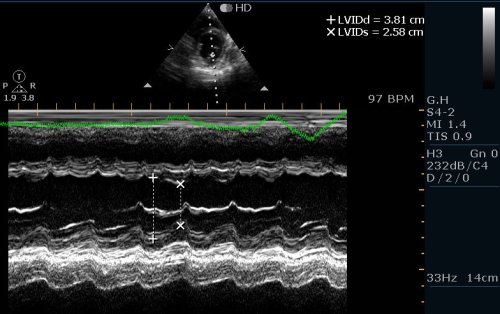LVH is supposed to produce tall R waves . But , we know often LVH is misdiagnosed as myocardial infarction especially anterior MI. (With deep q waves* in v1 to v3 and sometimes q in inferior leads as well)
Infarct tissue is a cluster of dead cells , while LVH is a bundle of live cells . How can the ECG produce similar changes in both ?
One need to realise , ECG does not function as a tissue identifying machine. It’s job is to simply tell which direction the current is traveling with reference to the recording electrode .
If it comes towards the electrode , R wave is recorded and if it goes away Q is recorded.
In infarction it is obvious the dead cells form a distinct electrically inert window so that the muscle mass located in the opposite pole (If viable ) will record q waves.
In LVH how the direction of current get reversed ?
We know, cardiac muscle is made up of not only myocytes , it is enriched with, fibroblasts, interstitial cells, collagen and other extracellular matrix .These non contractile cells have little electrical energy to show off. In physiological LVH there is not much proliferation of interstitium . It simply reflects hypertrophy of individual contractile units. It robustly produce good quality electricity and the ECG inscribes a tall r waves
Causes of physiological LVH include
- Athletic heart
- Many of the hypertensive patients
- Early stages of Aortic stenosis
- Any LVH due to increased loading conditions( In the initial stages )
Pathological LVH
Here LVH is predominately due to proliferation of fibroblasts and interstitial cells .This interferes with the alignment of sarcomeres of myocytes. When the architecture of contractile units are altered , it finds difficult to generate good quality action potentials . Since the ECG is the summation of action potentials , it gets distorted with local delay, notch ,slur etc . Ultimately it many cases q waves are inscribed .
Th q waves , gets amplified by the fibrotic process which is technically dead cells for the ECG machine at least !.
Note: Pathological LVH grows well with excellent nourishment from ACE gene dependent growth factors. In fact , who will develop pathological LVH (and who will not ) is predetermined by our ancestral genes. (Other wise called fate or destiny !)
Conditions causing pathological q waves
- About 10% of LVH due HT can manifest q waves
- HOCM
- Late stages of Aortic stenosis
- Some cases of Diabetic HT combination
- HT with CKD
* There is one more cause for q in LVH .This is technical . As the heart rotates counterclockwise , septal activity instead of recording a r wave , merges with the s wave mimicking q waves. In fact this could be very common cause for labeling LVH as MI.
Final message
Q waves are not sacred to diagnose MI.It can be generated even by live myocytes when it behaves like an electrically dead ones.












 y
y



